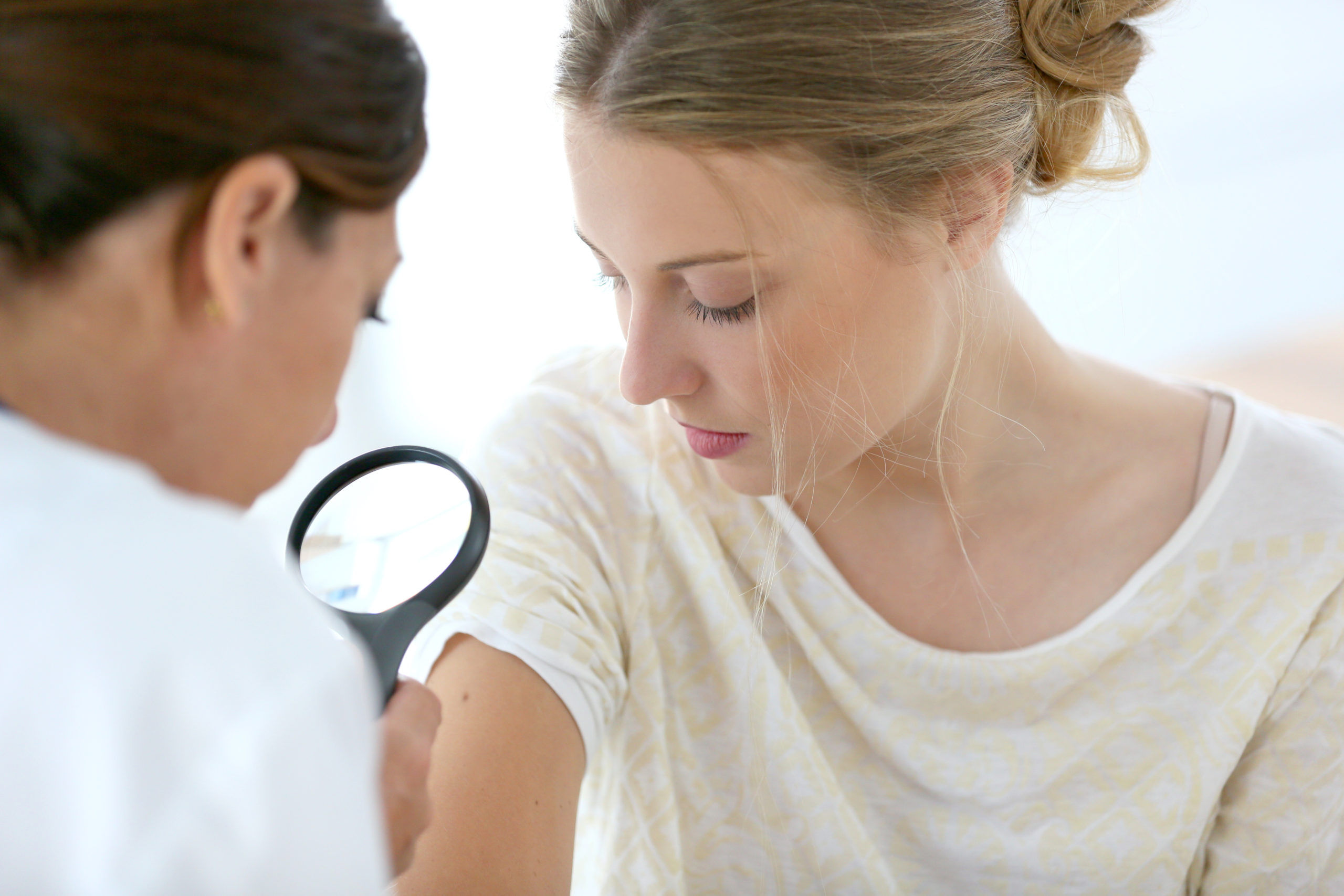by Frederick Schenk
Having grown up in Southern California, I spent much of my youth at the beach. The concept of sun screen was not a part of our vernacular. In fact, rather than slathering on SPF 50, we chose to bake while consumed by the fragrance of coconut oils. The only time one of us went to see a dermatologist was to receive acne treatments. Decades later, I, along with many of my contemporaries, have become Mohs skin cancer patients.
Many skin conditions—among them acne, psoriasis, eczema, infections and hair loss—may require a visit to a dermatologist, but skin cancer treatment and prevention are the most important reasons to schedule an appointment.
More than 9,500 people daily are diagnosed with skin disease, and more than two people in this country die from it every hour according to the Skin Cancer Foundation. Everyone is at risk.
To decrease the odds of being diagnosed with some variant of skin cancer, many know to limit overexposure to the sun’s harsh rays, especially during peak sunlight hours. Most importantly, people should take the crucial next step and visit a board-certified dermatologist for an annual, thorough skin screening. Individuals who have a family history or who have had cancer or an auto immune disorder should go every six months.
A dermatologist’s screening consists of a head-to-toe visual examination. If caught early on, the chance of successful treatment is much higher since skin cancer is one of the easiest cancers to cure.
Skin Cancer on the Rise
Unfortunately, skin cancer rates continue to soar despite the increasing awareness of preventative measures. According to the Skin Cancer Foundation, each year more and more people are diagnosed with some type of skin cancer, and experts predict one in five Americans will be diagnosed with some form of it by age 70.
Of the three types of skin cancer, the most common is basal cell carcinoma, which directly correlates to ultraviolet radiation exposure. Squamous cell carcinoma and melanoma—the deadliest variation—complete the trio. Baby boomers who grew up basking in the sun are now showing the unfortunate results of overexposure. In fact, having five or more sunburns doubles your risk of melanoma.
I have successfully battled skin cancer four times and can’t emphasize enough the importance of regular physician visits. An annual checkup is especially important if you—like me—fall in a high-risk group.
The Center for Disease Control (CDC) lists common risk factors:
» Fair skin and/or skin that freckles burns easily
» Blue or green eyes
» Blond or red hair
» A history of skin cancer in your family
» Regular sun exposure through work or recreation
» A history of sunburns
» Excessive moles
Those who are especially susceptible to skin cancer should receive more regular screenings, especially individuals who have had undergone organ transplants and are on medications that suppress the immune system. Other immunosuppressed patients at higher risk for skin cancer include those with HIV or leukemia.
Along with routine skin checks, see a dermatologist
if you notice a change in the shape, size, texture or coloring of any moles. A key warning sign of melanoma is an irregular growth that’s wider than a pencil eraser. And ask your dermatologist to check spots that continuously scab, crust, itch, hurt or bleed. Suspicious tissue can then be removed and analyzed in a lab.
While dermatologists treat patients for many types of skin disorders, skin cancer is by far the deadliest. Schedule your regular screening. Now.








Leave A Comment